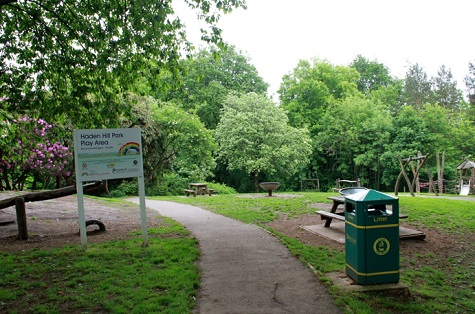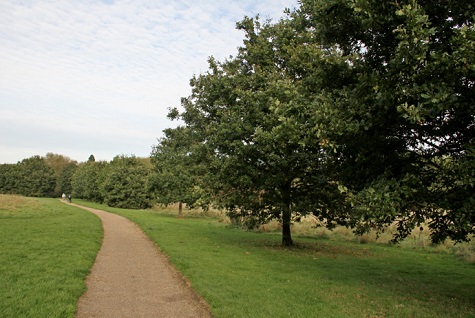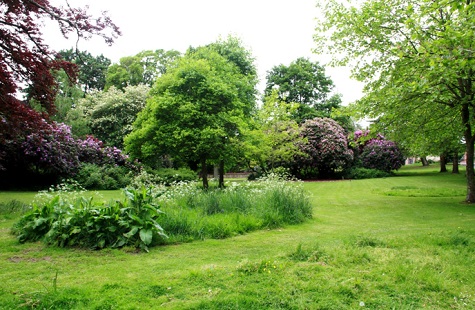Following on from last week’s blog when I wrote about the value of green spaces, I thought it would make sense this week, to consider the value of trees and what they bring to the community.
Can you imagine a town or city with no trees? It would, without a doubt, be an unpleasant place to live. Trees play a crucial role in communities and offer a variety of values, both environmental and social.
- Trees absorb pollutants and release oxygen during photosynthesis, contributing to improved air quality.
- Trees store carbon dioxide, helping to mitigate climate change by reducing greenhouse gas levels.
- Trees provide shade and cool the air through a process called transpiration, helping to regulate temperatures in urban areas.
- Trees provide habitats for various species, contributing to biodiversity and supporting the local ecosystem. They offer food and shelter for birds, insects, and other wildlife, promoting a healthy and balanced ecosystem.
- Trees enhance the beauty of the community, providing a pleasing visual environment.
- Green spaces with trees create recreational areas for residents, promoting physical and mental well-being.
- Trees help prevent soil erosion and promote water absorption, reducing the risk of flooding and improving water quality.

In summary, trees are invaluable to communities, providing a wide range of benefits that contribute to environmental sustainability, human well-being, and overall community resilience.
In recent years we have seen a plethora of pests and diseases that have decimated some species of trees and threaten the future of others. It is one of the reasons the government as set up a new plant security programme.
The word ‘biosecurity’ refers to a set of precautions that aim to prevent the introduction and spread of harmful organisms. These include non-native pests, such as insects, and disease-causing organisms called pathogens, such as some viruses, bacteria and fungi. These pests and pathogens threaten the health of our plants and trees the same way such types of organisms threaten the health of humans and animals.
In 2012, the fungal pathogen that causes ash dieback was first detected in the UK. This pathogen, which is often fatal to our native ash trees, arrived here naturally as wind-blown spores as well as through the importation of infected ash trees. The discovery of this devastating pathogen on our shores was a landmark moment, triggering a step change in public awareness. This led to the original plant biosecurity strategy for Great Britain being published in 2014.

Although the country has made significant progress in delivering that strategy, ash dieback is just one of an ever-growing number of threats to plant health.
Our plants and trees are vital natural capital. It is estimated their total annual value to the UK is £15.7 billion per year, comprising the economic, environmental and social benefits our plants and treescapes provide. This includes the important role our plants play in sequestering harmful greenhouse gases, otherwise known as carbon sequestration. This is estimated to be valued at £4.2 billion per year and will play a crucial role in achieving the government’s ambitions of overall Net Zero emissions by 2050.
The economic benefit of our plants and trees includes the value of our agricultural crops, horticulture, flowers and fruits and vegetables. This is estimated to contribute £4.1 billion to the UK’s economy every year, whilst the commercial forestry industry contributes £0.7 billion.
Our woodlands also provide important social benefits, including recreational benefits, biodiversity benefits and landscape amenity. Together this is estimated annually at £3.1 billion. Social benefits also include the mental health and well-being benefits of UK woodlands, which is estimated at £0.2 billion per year.

Using these estimates for the annual value of plants, an indication can be given of the asset value of trees. An asset value of trees estimates the value of the benefits that our trees provide over their lifetime. This analysis produces an asset value in the region of £350 billion through projecting the relevant tree-related values in the annual value of plants estimate, over a 100-year time period.
Some facts of the benefits of trees and plants:
- 98% of the oxygen we breathe is produced by plants
- 1.3 billion kg of air pollutants are removed by plants in the UK each year
- 80% of the food we eat is provided by plants
- 80% of the world’s terrestrial species of animals, plants and insects live in forests
- Over a third of the 454 native tree species in Europe are considered threatened
- Up to 74% of the social costs of greenhouse gas emissions could be avoided by having a greater plant-based diet
- Half the global population rely primarily on natural medicines for their healthcare
- 15,000 litres of water can be intercepted by a mature evergreen tree each year, mitigating flood risk
So, for me, we should all be aware of the value of our trees and green public open spaces. We need to be able to manage and maintain these to ensure our future generations can enjoy the many benefits they bring to safeguard our wellbeing.